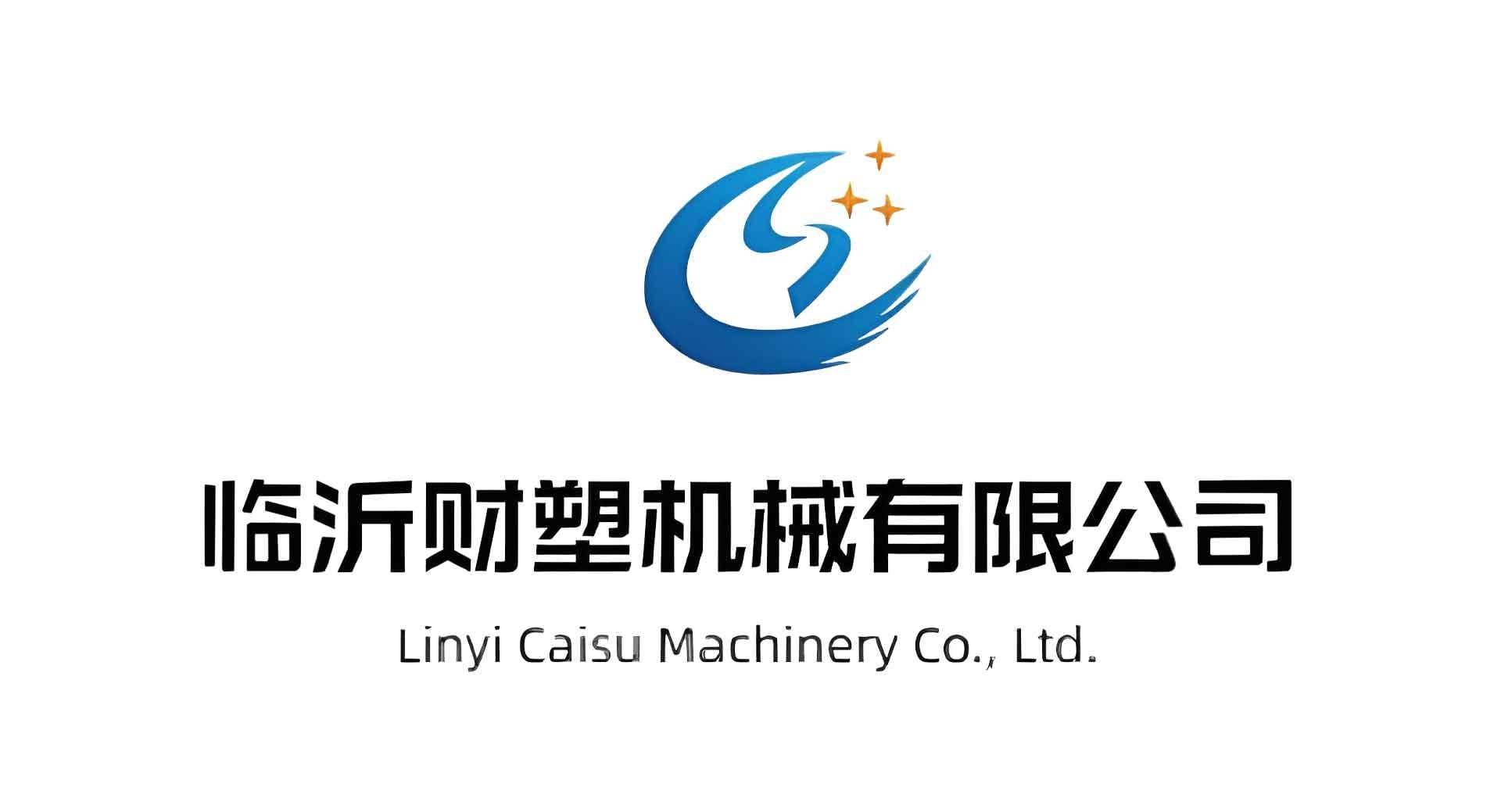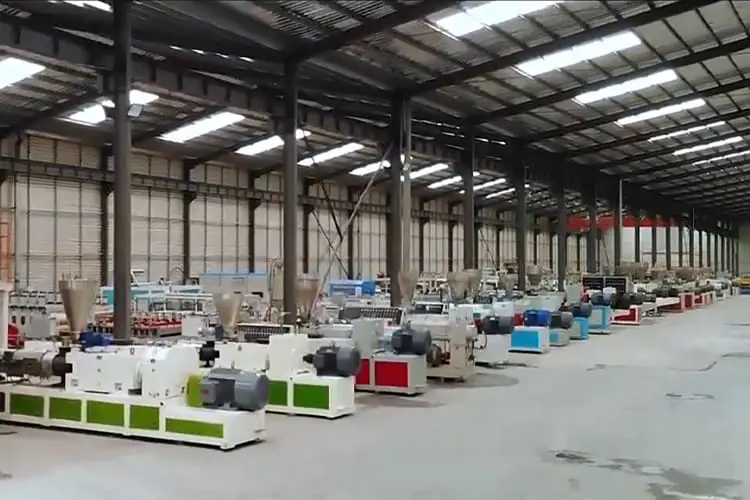Welcome to My Blog!
Before we dive into the content, I’d love for you to join me on my social media platforms where I share more insights, engage with the community, and post updates. Here’s how you can connect with me:
Facebook:https://www.facebook.com/profile.php?id=61567891941530
Now, let’s get started on our journey together. I hope you find the content here insightful, engaging, and valuable.
Caisu Machinery sells a variety of used plastic pipe production equipment. The products are of high quality and low price. Welcome to contact us for consultation and purchase. We will be happy to serve you.
Table of Contents
Introduction

Wood plastic foam board equipment is revolutionizing the production of wood plastic composite (WPC) foam boards, a sustainable alternative to traditional materials like wood and MDF. Combining PVC resin with wood powder, this equipment produces lightweight, durable, and eco-friendly boards used in construction, furniture, and signage. With global WPC market demand projected to reach $12 billion by 2027, wood plastic foam board equipment offers manufacturers efficiency and versatility.
This guide explores the technology, benefits, and applications of wood plastic foam board equipment, featuring a comparison table and FAQ to help businesses invest in high-performance systems for modern manufacturing needs, ensuring productivity and environmental responsibility.
Understanding Wood Plastic Foam Board Equipment
Wood plastic foam board equipment encompasses machinery like extruders, mixers, and calibrators designed to produce WPC foam boards with a closed-cell structure. These boards, blending 90–95% PVC and 5–10% wood powder, offer wood-like aesthetics with superior durability, as noted by Boardway Plastic Sheet. This section examines the components, processes, and foundational benefits of wood plastic foam board equipment, providing insights for manufacturers.
Components of Wood Plastic Foam Board Equipment
Wood plastic foam board equipment includes twin-screw extruders, mixing units, calibration tables, and cutting systems. Twin-screw extruders, with capacities of 200–600 kg/h, melt and blend PVC resin, wood powder, and additives like stabilizers, ensuring homogeneity, as per Skyline Composites. Mixing units maintain precise ratios, while calibration tables shape boards to thicknesses of 3–20 mm. Cutting systems deliver precise dimensions, supporting applications from cabinetry to cladding. These components ensure consistent quality and scalability in WPC production.
Manufacturing Processes in Wood Plastic Foam Board Equipment
The production process using wood plastic foam board equipment involves mixing, extrusion, foaming, and finishing. Raw materials are blended at 120–140°C in a high-speed mixer, then fed into a twin-screw extruder for melting and foaming via the Celuka process, creating a rigid core, as described by Boardway Plastic Sheet. The foamed material is cooled and shaped in calibration units, then cut into sheets. This process ensures boards with densities of 0.4–0.8 g/cm³, offering lightweight yet strong properties for diverse applications.
Types of Wood Plastic Foam Board Equipment
Wood plastic foam board equipment varies by production scale and board type. Small-scale lines (200 kg/h) suit custom furniture, while high-capacity lines (600 kg/h) support industrial cladding, as per Skyline Composites. Celuka equipment produces smooth, high-density boards, while co-extrusion systems add colored PVC layers for aesthetics. Automated systems with PLC controls enhance precision, reducing waste by 5–10%. Manufacturers can select equipment based on output, board specifications, and automation needs.
Benefits of Modern Wood Plastic Foam Board Equipment
Modern wood plastic foam board equipment offers automation, energy efficiency, and versatility. PLC-controlled systems reduce labor costs by 15–20%, while energy-efficient motors lower power consumption by 10%, as noted by Boardway Plastic Sheet. Equipment supports diverse board sizes (1220 x 2440 mm standard) and densities variations, catering to furniture, construction, and signage. Its ability to process recyclable materials aligns with sustainability goals, making it a preferred choice for eco-conscious manufacturers.
Benefits of Using Wood Plastic Foam Board Equipment

Wood plastic foam board equipment delivers significant advantages, from producing durable, eco-friendly boards to enhancing manufacturing efficiency. This section explores key benefits, including material properties, production efficiency, and market adaptability, highlighting why businesses invest in this technology.
Superior Material Properties from Wood Plastic Foam Board Equipment
Wood plastic foam board equipment produces boards with exceptional properties. WPC boards are waterproof, with a water absorption rate of 0.08%, and resist termites, unlike wood, as per Laird Plastics. They offer fire resistance (ASTM E84 Class A for reinforced variants) and chemical resistance, ideal for harsh environments. With a strength-to-weight ratio 10 times higher than plywood, these boards suit applications from kitchen cabinets to outdoor cladding, ensuring longevity and performance.
Production Efficiency with Wood Plastic Foam Board Equipment
Wood plastic foam board equipment optimizes production. High-speed extruders process 200–600 kg/h, reducing cycle times by 20% compared to traditional board manufacturing, as noted by Skyline Composites. Automated calibration and cutting minimize waste, while modular designs allow quick reconfiguration for different board sizes. This efficiency lowers labor and material costs, enabling manufacturers to scale operations and meet market demands effectively.
Eco-Friendliness of Wood Plastic Foam Board Equipment
Sustainability is a core advantage of wood plastic foam board equipment. It uses rice husk or wood powder, reducing reliance on timber and utilizing agricultural waste, as per Boardway Plastic Sheet. WPC boards are 100% recyclable, and equipment minimizes emissions through efficient processing. This aligns with global sustainability trends, appealing to eco-conscious markets and supporting certifications like LEED for green building projects.
Versatility in Applications Using Wood Plastic Foam Board Equipment
Wood plastic foam board equipment supports diverse applications. Boards are used in furniture (e.g., cabinets, shelves), construction (e.g., cladding, partitions), and signage (e.g., outdoor displays), as highlighted by Piedmont Plastics. Equipment allows customization of board thickness, density, and color, meeting aesthetic and functional needs. Co-extrusion systems add vibrant finishes, enhancing appeal for decorative panels, making WPC a versatile alternative to wood and MDF.
Market Competitiveness with Wood Plastic Foam Board Equipment
Investing in wood plastic foam board equipment enhances market competitiveness. WPC boards offer a 30–40% longer lifespan than wood, reducing replacement costs, as per Laird Plastics. Equipment’s high output and low maintenance ensure cost-effective production, enabling competitive pricing. Its ability to produce UV-resistant, weatherproof boards meets growing demand in outdoor applications, positioning manufacturers to capture market share in construction and furniture sectors.
Comparison Table and Selection Insights for Wood Plastic Foam Board Equipment
To aid in selecting wood plastic foam board equipment, the following table compares key features and applications of different equipment types, providing a reference for manufacturers.
| Equipment Type | Key Features | Applications |
|---|---|---|
| Celuka Extrusion Line | High-density boards, smooth surface, 200–400 kg/h | Kitchen cabinets, wall cladding |
| Co-Extrusion Line | Colored outer layers, UV resistance, 300–600 kg/h | Outdoor signage, decorative panels |
| Small-Scale Extrusion Line | Compact, 100–200 kg/h, low energy use | Custom furniture, small-batch signage |
| Automated Production Line | PLC controls, 400–600 kg/h, minimal waste | Industrial cladding, mass production |
| High-Density WPC Line | Rigid boards, 300–500 kg/h, enhanced strength | Structural partitions, flooring |
Selection Insights for Wood Plastic Foam Board Equipment
The table highlights the diversity of wood plastic foam board equipment. Celuka lines excel for smooth, high-density boards used in furniture, while co-extrusion lines suit outdoor applications with UV-resistant finishes, as per Boardway Plastic Sheet. Small-scale lines are ideal for custom or low-volume production, while automated lines maximize efficiency for large-scale operations. Selection depends on output needs, board specifications, and application requirements, ensuring alignment with business goals, as advised by Skyline Composites.
Strategies for Choosing Wood Plastic Foam Board Equipment
To choose wood plastic foam board equipment, assess production goals and market demands. For furniture, prioritize Celuka lines for smooth finishes; for signage, select co-extrusion for weather resistance. Evaluate capacity—small-scale (100–200 kg/h) for startups, high-capacity (400–600 kg/h) for established manufacturers. Consider automation to reduce labor costs and energy-efficient models to lower operating expenses, as per Laird Plastics. Verify supplier support and spare parts availability to ensure long-term reliability.
Practical Considerations for Wood Plastic Foam Board Equipment

Effective use of wood plastic foam board equipment involves strategic planning, operation, and maintenance. This section provides actionable guidance for manufacturers to maximize performance.
Assessing Needs for Wood Plastic Foam Board Equipment
Evaluate production scale, board specifications, and applications to select wood plastic foam board equipment. Small furniture workshops benefit from compact lines (100–200 kg/h), while construction suppliers need high-capacity systems (400–600 kg/h), as per Skyline Composites. Ensure compatibility with raw materials—e.g., rice husk vs. wood powder—and verify power requirements (e.g., 100–200 kW). Consult suppliers like Boardway Plastic Sheet for tailored solutions, ensuring equipment meets output and quality goals.
Operating Wood Plastic Foam Board Equipment Efficiently
Efficient operation maximizes the value of wood plastic foam board equipment. Train operators on PLC systems to optimize extrusion parameters, reducing defects by 10%, as noted by Boardway Plastic Sheet. Maintain consistent material feed rates (e.g., 200 kg/h) and monitor temperatures (120–140°C) to ensure board quality. Regular calibration checks prevent dimensional errors, while automated cutting systems enhance precision, as advised by Piedmont Plastics. Implement safety protocols, like ventilation for dust control, to protect workers.
Maintaining Wood Plastic Foam Board Equipment
Maintenance extends the life of wood plastic foam board equipment. Lubricate extruder screws every 500 hours and inspect calibration units quarterly, as per Skyline Composites. Clean mixing units to prevent material buildup, and replace worn dies to maintain board consistency. Schedule downtime for motor and gearbox checks, reducing unexpected failures by 15%. Suppliers like Boardway Plastic Sheet offer spare parts and service contracts, ensuring minimal downtime and long-term reliability.
Scaling Production with Wood Plastic Foam Board Equipment
Scaling production involves upgrading wood plastic foam board equipment and optimizing workflows. Add co-extrusion modules to produce decorative boards, expanding market reach, as per Laird Plastics. Integrate automated stacking and packaging systems to handle higher outputs (600 kg/h). Source sustainable raw materials, like recycled PVC, to reduce costs by 5–10%. Plan for modular equipment designs, allowing future expansions without replacing core systems, ensuring scalability for growing demand.
Challenges in Using Wood Plastic Foam Board Equipment
Challenges include initial setup costs, operator training, and material variability. Wood plastic foam board equipment requires significant investment, though long-term savings offset costs, as per Boardway Plastic Sheet. Training operators on advanced systems takes 2–4 weeks, impacting startup timelines. Variations in wood powder quality can affect board consistency, requiring strict supplier standards. Mitigate by selecting reputable suppliers and investing in automated quality control, ensuring reliable production, as advised by Skyline Composites.
Conclusion
Wood plastic foam board equipment is a game-changer for producing sustainable, durable WPC boards, offering efficiency, versatility, and eco-friendliness. From furniture to construction, this technology meets diverse market needs while reducing environmental impact.
This guide, with its table and FAQ, equips manufacturers to make informed investments, ensuring long-term success. Explore the FAQ for deeper insights to optimize your production processes.
FAQ
What is wood plastic foam board equipment?
Wood plastic foam board equipment includes extruders, mixers, and calibrators for producing WPC foam boards used in furniture, construction, and signage.
Why invest in wood plastic foam board equipment?
It offers efficient production, eco-friendly boards, and versatility, reducing costs and meeting market demands for sustainable materials.
What applications suit wood plastic foam board equipment?
It produces boards for kitchen cabinets, wall cladding, outdoor signage, and structural partitions, replacing wood and MDF.
How efficient is wood plastic foam board equipment?
High-speed lines process 200–600 kg/h, with automation reducing waste and labor costs by 15–20%, as per industry data.
What are the maintenance needs for wood plastic foam board equipment?
Lubricate screws every 500 hours, inspect units quarterly, and clean mixers to ensure consistent performance and longevity.





